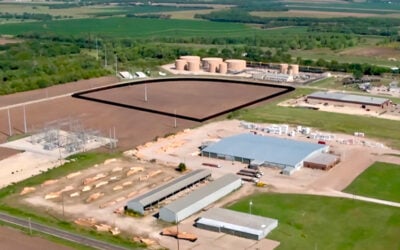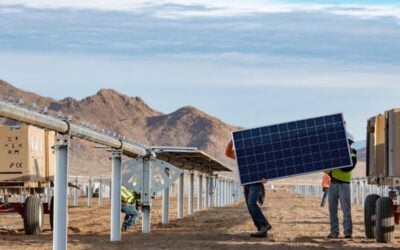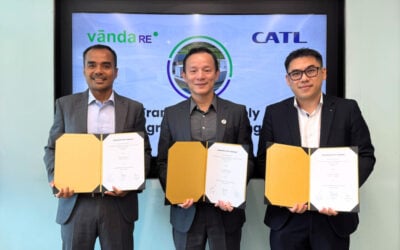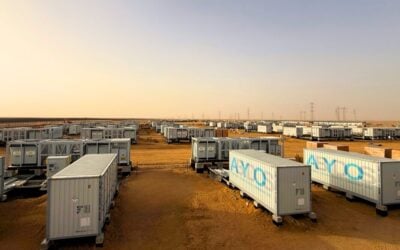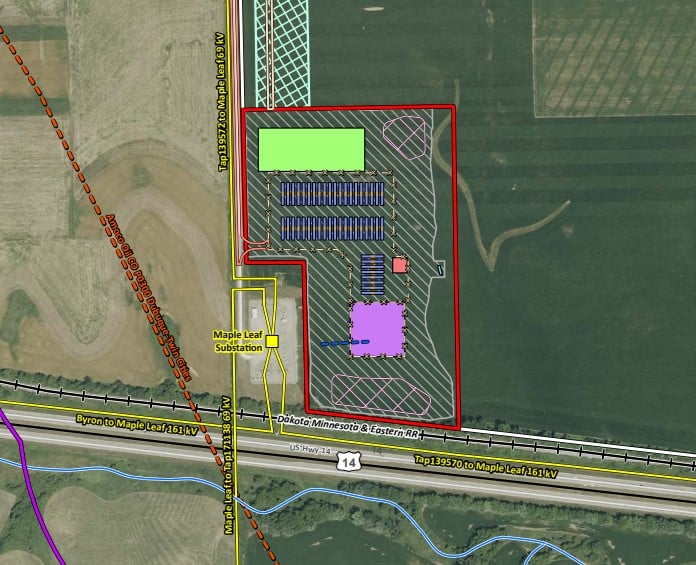
Three US-based independent power producers (IPPs) are currently seeking permission from the Minnesota Public Utilities Commission (PUC) to construct new renewable energy facilities incorporating battery storage located across the North Star State.
Spearmint Energy, NextEra Energy Resources (NEER) and Primergy Solar have all submitted initial applications with the state regulator outlining details of three projects which are expected to include a cumulative 300MW of BESS capacity.
Enjoy 12 months of exclusive analysis
- Regular insight and analysis of the industry’s biggest developments
- In-depth interviews with the industry’s leading figures
- Annual digital subscription to the PV Tech Power journal
- Discounts on Solar Media’s portfolio of events, in-person and virtual
Site permits needed for Minnesota BESS projects over 10MW
For battery storage projects in Minnesota over 10MW in size, developers must obtain permission from the Minnesota PUC to commence construction through the issuance of a Site Permit.
The process of obtaining a Site Permit begins once the developer submits an initial application with the PUC outlining the broad intentions of the proposed development. The Minnesota Department of Commerce’s Energy Environmental Review and Analysis (EERA) then compiles an Environmental Assessment (EA) report for the PUC, outlining the potential impacts of the proposed development on the surrounding environment.
Similarly with other state environmental review processes, the EERA will hold a public meeting giving an opportunity to the public to submit comments as to what should be included within the EA, along with any alternatives that should be considered.
Upon completion of the EA report, an Administrative Law Judge (ALJ) will hold a public hearing, where key stakeholders will have the opportunity to discuss the EA and ask any questions on the project. The ALJ will then prepare a report, which the PUC will use along with all the other available information, to approve or deny the permit.
Once the initial application is deemed complete, the PUC has up to six months to make a determination on the development, plus an additional three months in extraordinary circumstances.
600MWh BESS from Spearmint Energy
The largest of the three battery storage proposals – dubbed Snowshoe BESS – comes from Miami, Florida-based developer Spearmint Energy which is seeking approval to construct a 150MW/600MWh standalone battery facility located on an approximately 28-acre site in Kalmar Township, Olmsted County.
Spearmint Energy lodged notice of its formal site permit application on October 14 2024 with the Minnesota PUC notifying interested stakeholders of its regulatory filing.
The project will connect to the Midcontinent Independent System Operator (MISO) grid via Southern Minnesota Municipal Power Agency (SMMPA’s) Maple Leaf substation. Spearmint submitted a Generator Interconnection (GI) request with MISO for its Snowshoe project in September 2022 that it expects to secure during the first quarter of 2026 (queue no. J2731).
Although no offtake agreements are currently in place for the project, Spearmint states that it expects the Snowshoe project to provide energy, capacity, and ancillary services on the wholesale power market on a merchant basis under some form of Tolling Agreement (TA).
Battery technology for the project has also not been selected, however, preliminary designs submitted with the PUC were based around the Tesla 2XL Megapack.
Construction on the project is expected to commence during the first quarter of 2027 and be completed by the end of the same year. Spearmint estimates capital costs for the Snowshoe BESS project of approximately US$214 million.
NextEra Energy Resources 400MWh co-located project
The second largest project in terms of BESS size is a proposal from NEER who is seeking regulatory approval to construct a 100MW solar farm co-located with a 100MW/400MWh BESS located across a 941-acre site approximately 4 miles east of St. Cloud in Benton County.
NEER is seeking two site permits for its Benton Solar & Storage project – one relating to the solar farm and the other for the co-located BESS. Unlike other states in the US, where a single permit can authorise the construction of both the BESS and any co-located generation facility, individual site permits are required for each aspect of a renewable energy development within Minnesota.
The Benson project will also connect to MISO’s electricity grid, but this time via the Benton County substation owned by Great River Energy (GRE). NEER secured an interconnection agreement for the solar portion of the project in August 2022 (queue no. J1426), and is in the process of securing a surplus agreement for the BESS portion.
Construction on NEER’s Benson project, expected to cost approximately US$324.5 million, is anticipated to commence during the second quarter of 2026 and be completed by the end of 2027.
Primergy Solar’s Northern Crescent project
The final project comes from Primergy Solar who is seeking two Site Permits from the Minnesota PUC relating to the development of its Northern Crescent hybrid project located across 1,179 acres in Verona and Prescott Townships, Faribault County.
Primergy is seeking a MISO interconnection agreement for the Northern Crescent project covering 150MW of solar generation and 50MW of BESS capacity via Xcel Energy’s Huntley-Blue Earth 161 kV transmission line, which the developer expects to secure before the end of this year (queue no. J1572).
Capital costs for the project are estimated at approximately US$337 million, with the BESS expected to cost US$1 million/year to operate. The project is expected to enter commercial operation in 2027.
Minnesota’s first solar-plus-storage project approved
Prior to these recent energy storage project applications, it’s already been a big year for storage announcements in Minnesota. In March, the PUC issued Invenergy with a Site Permit for the development of its Lake Wilson Solar and BESS project – marking the first co-located project permitted by the Minnesota state regulator.
As reported in Energy-Storage.news, Form Energy also broke ground on its first iron-air battery that’s being built in collaboration with GRE located in Cambridge, Minnesota. The 1.5MW/1,500MWh long-duration energy storage (LDES) pilot project is expected online towards the end of 2025.
Minnesota is one of the more ambitious US states when it comes to reducing greenhouse gas emissions from its electricity production. In 2023, Minnesota Governor and now US Vice President Vice Candidate Tim Walz signed into law Senate File 4, requiring all electricity sold in the state be 100% carbon free by 2040.

